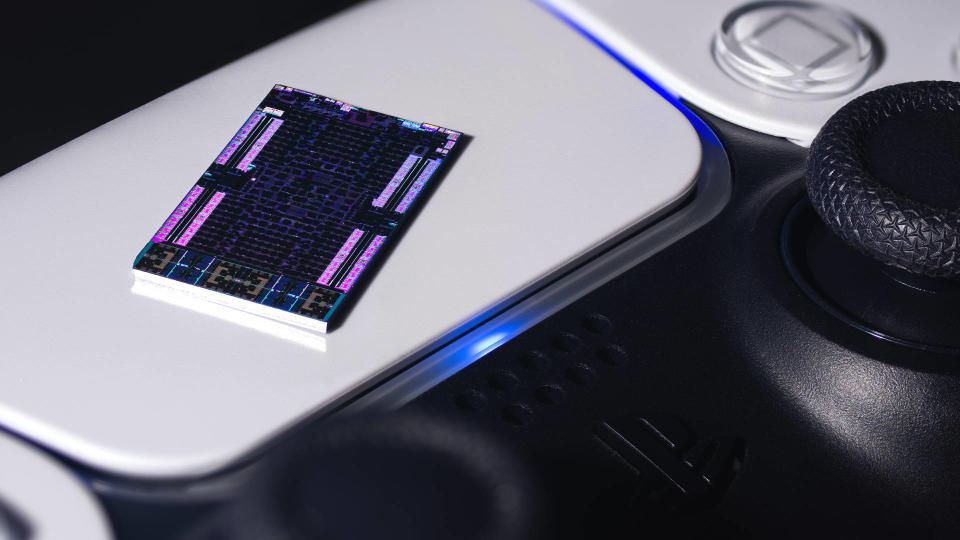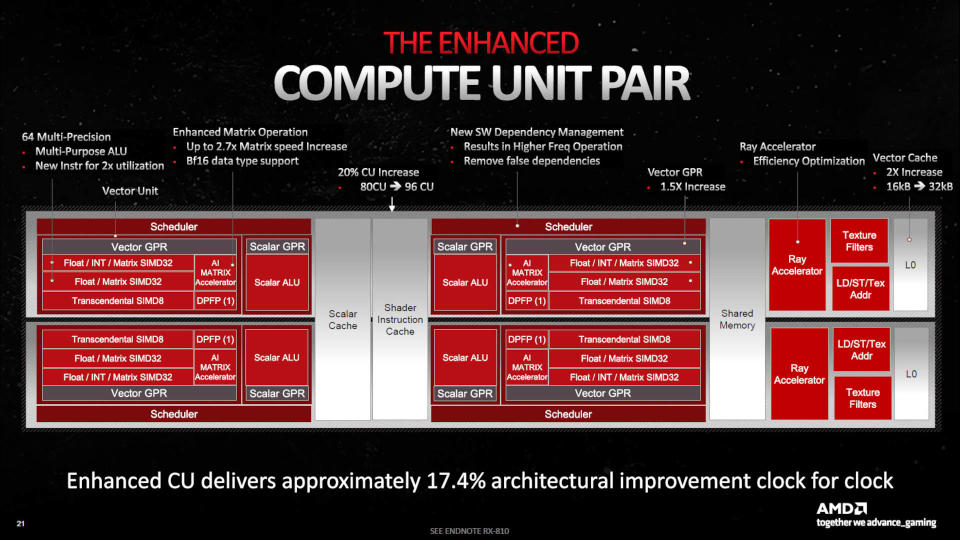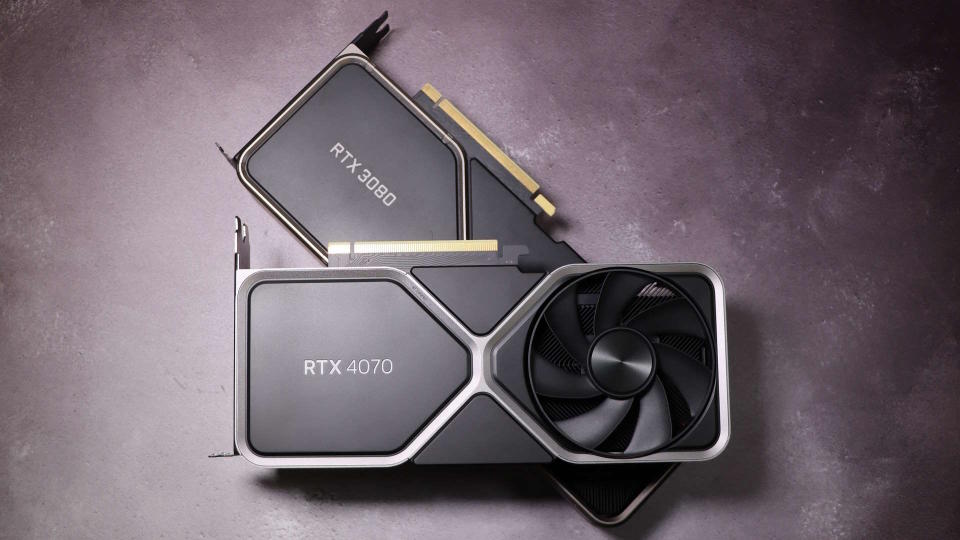Hot on the heels of rumors that Sony plans to release its own upgrade technology alongside the upcoming PlayStation 5 Pro, comes a wealth of information about what the next-generation console’s hardware will be like. The CPU will still be the same Zen 2 core and the RAM will be slightly faster, but the GPU is replaced with a completely new design. And it looks like it’s a great mix of RDNA 3 and RDNA 4.
The leaks in question come from Inside Gaming, and although they are unfounded claims, the details seem convincing enough to me. For example, the PS5 Pro’s custom AMD APU is said to retain the Zen 2-powered CPU in the original PlayStation 5. So that still means eight cores and 16 threads, but that’s fine for most games.
It won’t run any faster, but it will apparently be an additional operating mode that will allow it to draw more power to achieve a 10% higher clock speed. This will come at a cost to the GPU; The GPU will receive less power in this mode, but will only lose 1% of its performance. Why doesn’t Sony use a faster CPU? The answer is simple: backwards compatibility. All PS5 games and older games running on the platform expect a CPU clocked at 3.5GHz at best. Changing it too much can mess things up.
The same goes for system RAM. Each PS5 has 16GB of average speed GDDR6, and access to it is shared by the CPU and GPU. Running at 14 Gbps on a 256-bit unified memory bus, a pretty serious 448 GB/s total bandwidth is offered. The PS5 Pro will apparently offer 576GB/s bandwidth, which will equate to 18Gbps speeds assuming the bus width changes.
To put these figures into perspective, the Radeon RX 6800 and RX 7800 XT both have 256-bit buses, but the former uses 16 Gbps GDDR6 while the latter has chips clocked at 19.5 Gbps for 624 GB/s bandwidth. On paper, this makes the PS5 Pro look particularly nice, as the RX 7800 XT isn’t bad at all, but the GPU also includes 64MB of Level 3 cache (aka Infinity Cache) to reduce the load on VRAM.


There’s no sign that the PS5 Pro’s APU is getting Infinity Cache because AMD and Sony need the chip to be as small as possible to keep production costs low. But since CPU And The GPU uses the same pool of RAM and 576 GB/s bandwidth will be very challenging. Especially when you read about the alleged changes to the graphics processor.
In the original PS5, the GPU looks almost like an RDNA 2 processor, with 36 Processing Units (CUs) mapped to 18 Working Group Processors (WGPs). Inside each CU are two banks of 32 ALUs that manage all shaders. Rumors for the PS5 Pro claim that the new GPU has 30 WGP, the same as the RX 7800 XT, for a peak FP32 throughput of 33.5 TFLOPS.
If both of these figures are correct, the only way this will happen is if the CUs are based on the RDNA 3 architecture, which means they have two banks of 64 ALUs. A little quick calculation on paper puts the boost clock at 2,180 MHz; This is lower than the PS5’s, but the extra shaders more than make up for it.
But it is also said that the Beam Accelerators in the CUs support BVH8 pass shaders. BVHs, or bounding volume hierarchies, are data structures used to speed up studying which object a light ray interacts with, and in RDNA 3 shaders operate on four BVH children (aka BVH4) from each node.


In theory, increasing this to eight means that the PS5 Pro GPU should be able to run much faster than before during the transition period. At least potentially, it’s not as simple as ‘double the numbers and double the performance’. While there’s no indication that AMD is shifting these operations from CUs to dedicated hardware units (like Nvidia has done with its GPUs), the change in cross-shaders gives us the impression that the new GPU Negative a pure RDNA 3 one, instead an RDNA 3/4 hybrid.
It’s unlikely to be a full RDNA 4 design as it doesn’t have any Infinity Cache, but if the numbers are all to be believed, it’s more RDNA 4 than 3. The key sign of this is the bet on Artificial Intelligence Accelerators appearing for the first time. RDNA at 3. The PS5 Pro’s chip is claimed to achieve 300 TOPS in INT8 mode and 67 TFLOPS in FP16 mode.
For example, the Radeon RX 7800 XT with RDNA 3 can perform 512 INT8/FP16 operations per CU per clock cycle on AI accelerators; which means peaks of 75 TOPS and 75 TFLOPS respectively. For comparison, we can say that the Tensor cores in Nvidia’s GeForce RTX 3090 Ti have a peak INT8 throughput of 320 TOPS.
What good will all this do? AI, be it in the form of augmentation or any other task to which machine learning can be applied.
Your next upgrade


Best CPU for gaming: The best chips from Intel and AMD.
best gaming motherboard: Correct boards.
best graphics card: Your perfect pixel pusher is waiting for you.
Best SSD for gaming: Enter the game before others.
At this stage everything ifs And but Sand there is no guarantee that any of this is true. But machine learning and ray tracing performance were previously RDNA’s Achilles heel; So, given how important machine learning workloads are these days, it makes perfect sense that AMD will significantly improve them for RDNA 4.
Given that I already have a perfectly good PS5 and multiple gaming PCs in my home, I’m unlikely to go out and buy a PlayStation 5 Pro when it launches, but from a tech writer’s perspective it looks pretty promising.
From a GPU enthusiast’s perspective, RDNA 4 looks extremely interesting: It may not be at the top of the performance charts, but it looks like it will have all the features you could want.